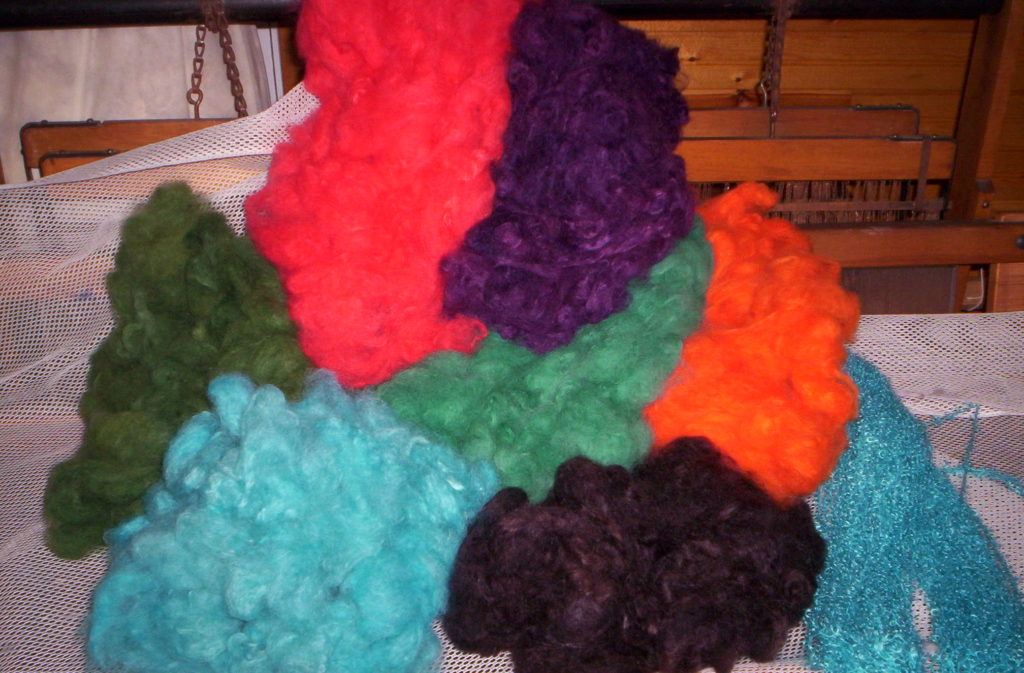Warped Weavers Studio

It is safe to let you know now that I was not excited about this dye. It has been my experience that “safer, greener” dyes leave a lot to be desired. Usually they have duller colors, harden the fiber and have no depth of color. It is just the opposite with these. They are bright, shiny, and my alpaca is as soft as when I started.
02/23/2010 – Kathy Berlincourt
Warped Weavers Studio, Battle Creek, MI
Cross Village Rug Works
I work with a non-profit organization called Cross Village Rug Works in northern Michigan. We have a multi-faceted mission, parts of which are to have yarn milled from area fiber farmers’ fleece and dye it ourselves for use in hand-crafted textiles, and to preserve our natural surroundings. We are right on the shore of Lake Michigan and the choice of dyes for this process was a careful one; we needed a brand that is eco-friendly as well as able to be mixed to create a wide range of colors. We are so excited to have found your Greener Shades dyes – they suit all of our needs perfectly. We are in the process of creating a color library that is as gorgeous as it is functional, and we are safe in the knowledge that we are not harming our pristine surroundings.
Thanks so much for your Greener Shades dyes; we truly have been able to support several facets of our mission because of them.
2/25/2009 – Mandy Andersen – Cross Village Rug Works, Cross Village, MI
Three Waters Farm
I sampled Ruby Red, River Blue, and Sunshine Yellow by hydrating each dye to a medium dilution — what I call “1 DOS.” Estimating the 1/2 ounce envelopes at approximately 15 grams, I put them in solution with 1485 mls of water, almost 1 1/2 litres. We can consider this approximate, weighing and measuring being what they are, though I am pretty consistent in my measuring, and careful.
Using the dyes the way I would use any dye with which I was “painting.” I sampled on Blueface Leicester top, a fiber that I use a lot for sampling. For each color, I sampled a section at 1, 1/2, 1/4, 1/8, and 1/16 dos. On the River Blue, I had room for 1/32 as well. Each splotch is probably 40 mls or so of dye. When painting, it is easy to increase the intensity of each depth of shade by applying a lot of dye, so I just tried to be consistent enough to make reliable samples. The Ruby Red makes a glorious muscular pink at 1/16. (Pink can be so wimpy or so candyish; this looks like a real pink.)
After I sampled each dye individually, I did some basic mixing. Working with a 100%, 75/25. 50/50, 25/75, 100% pattern, I worked my way around the color wheel at 1 DOS.
I was impressed by the brilliance of the dyes. The River Blue/Ruby Red at 75/25 make a zingy aubergine that looked good all through the color shift. The River Blue/Sunshine yellow mixes made really terrific greens — the 25/75 combo is fabulous. Ruby Red/Sunshine makes some interesting orange reds. Some of those middle colors deserve precise explorations of their own, and of course, there are the possibilities of combining complementary colors of different dilutions to explore all the ‘dirty’ colors.
It would also be interesting to do some blending at lesser concentrations and see how the mixed colors do with less intensity.
7/7/2008 – Mary Ann Pagano – http://www.threewatersfarm.com
